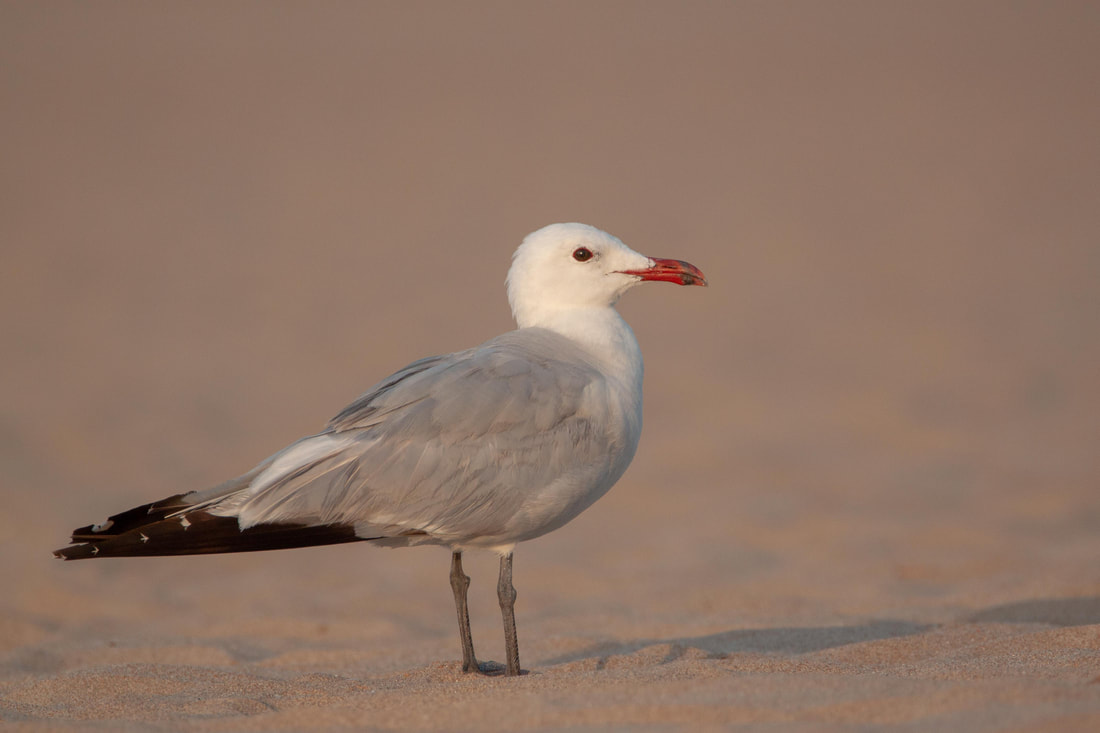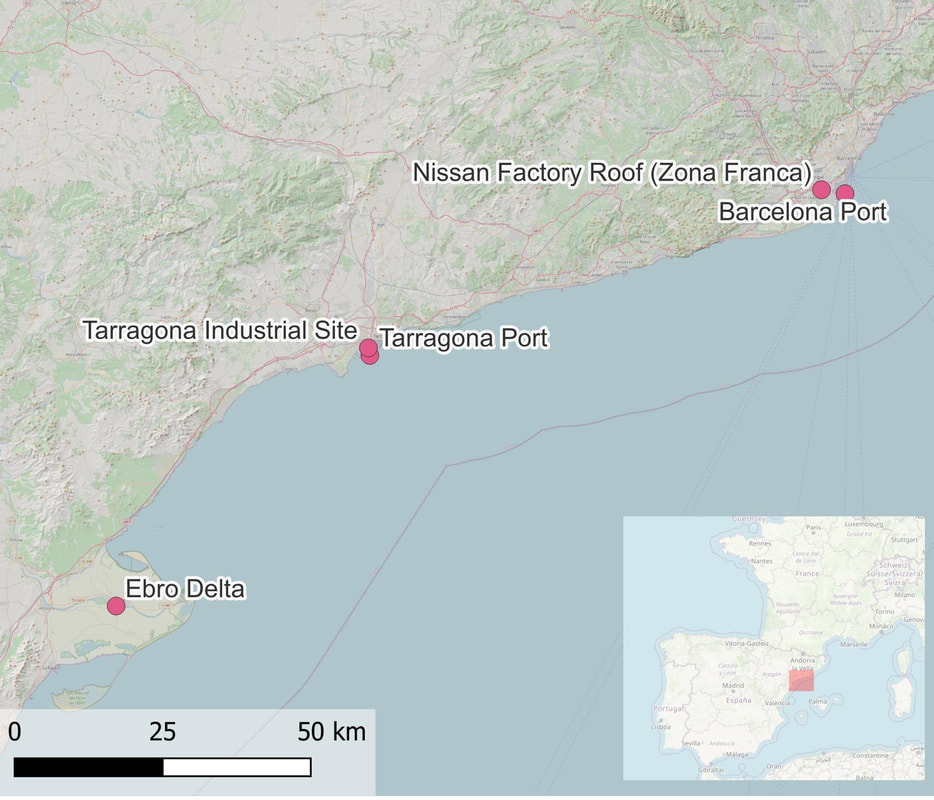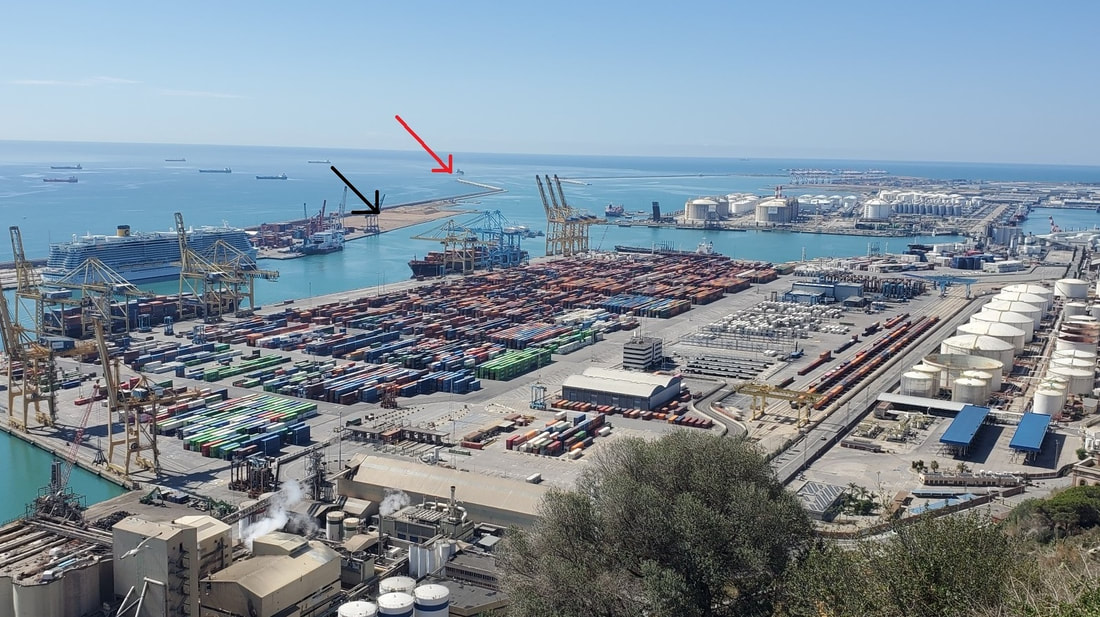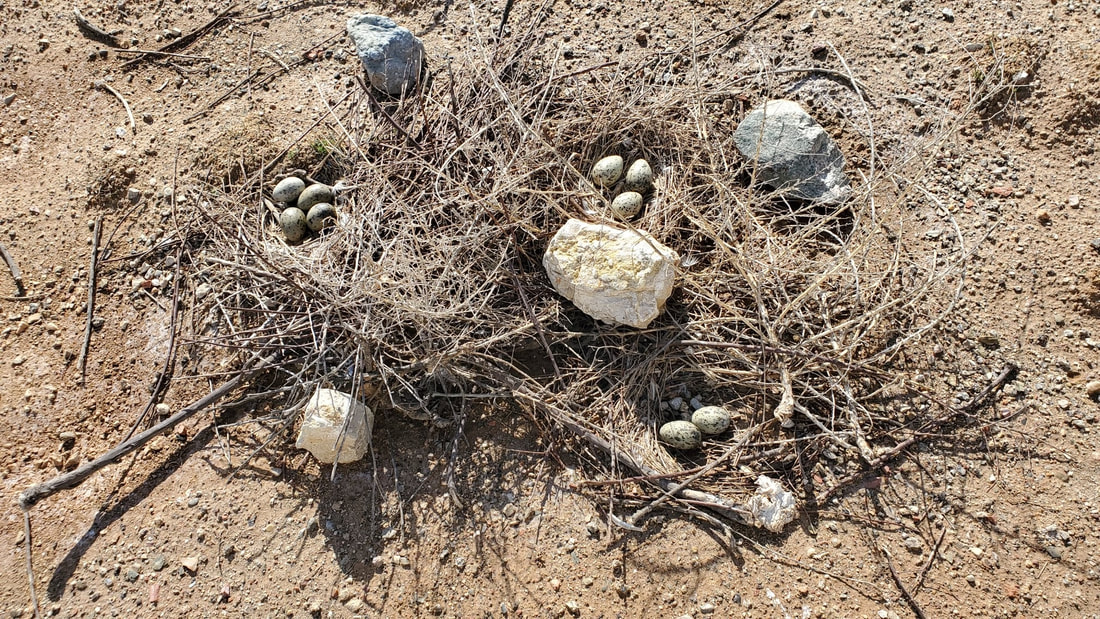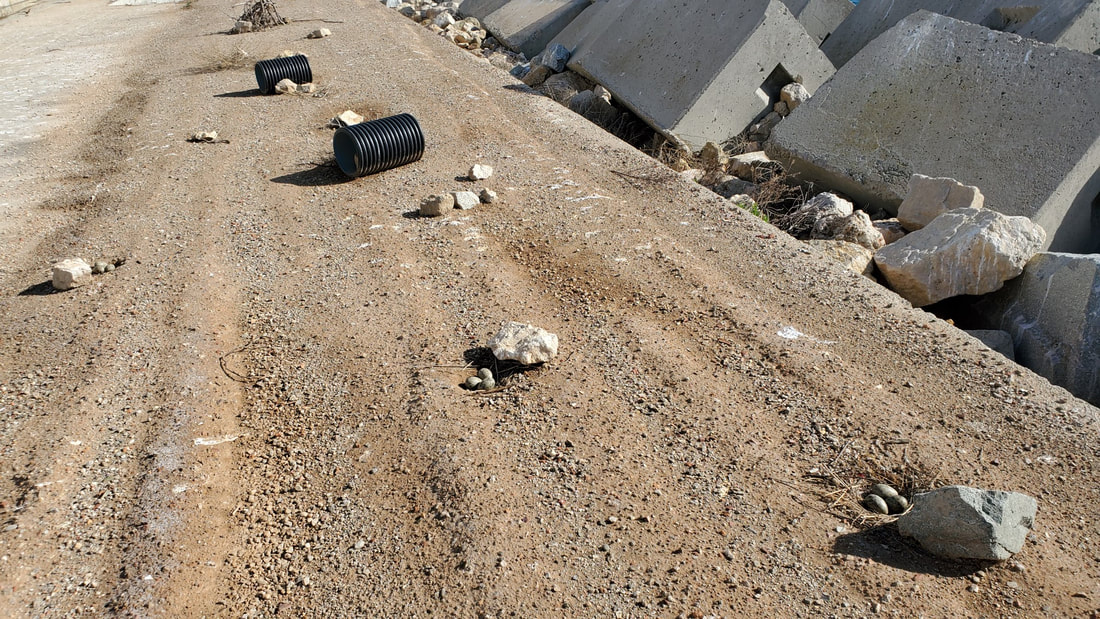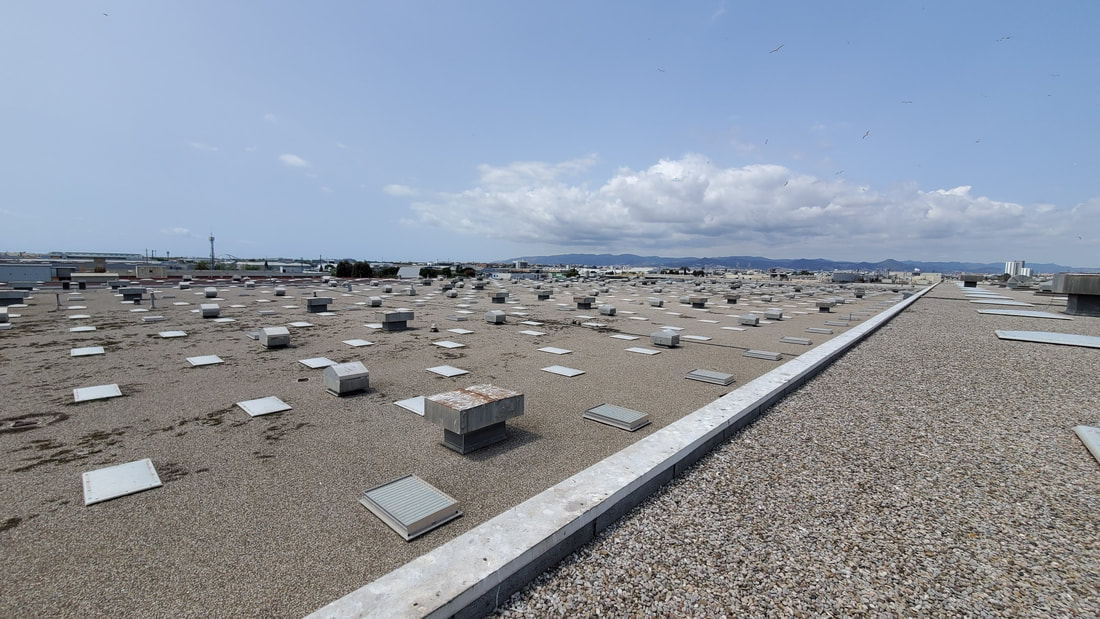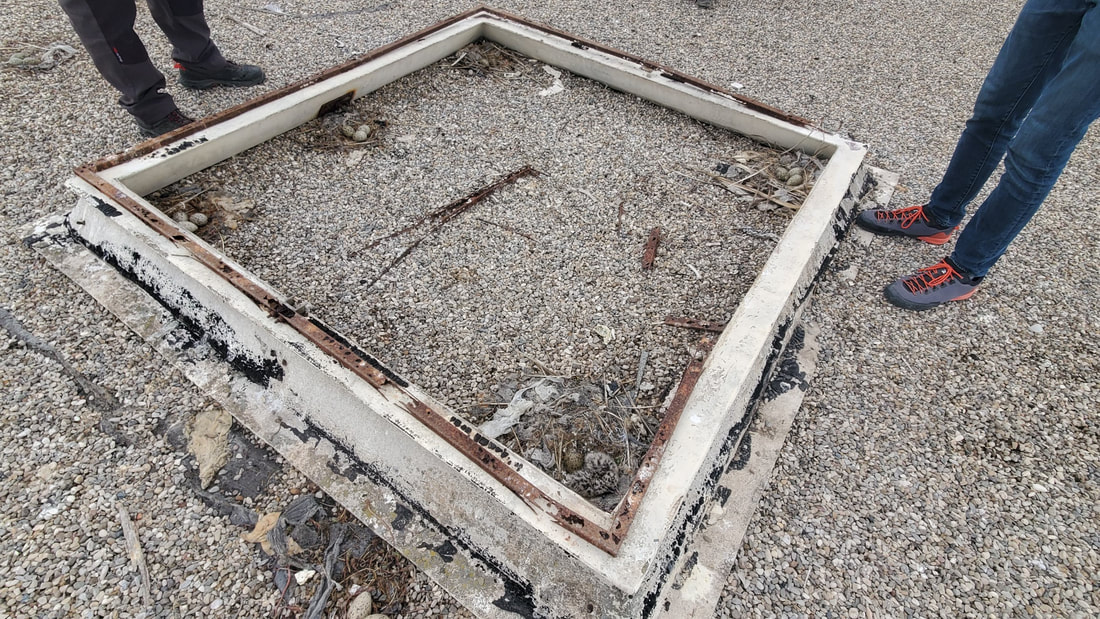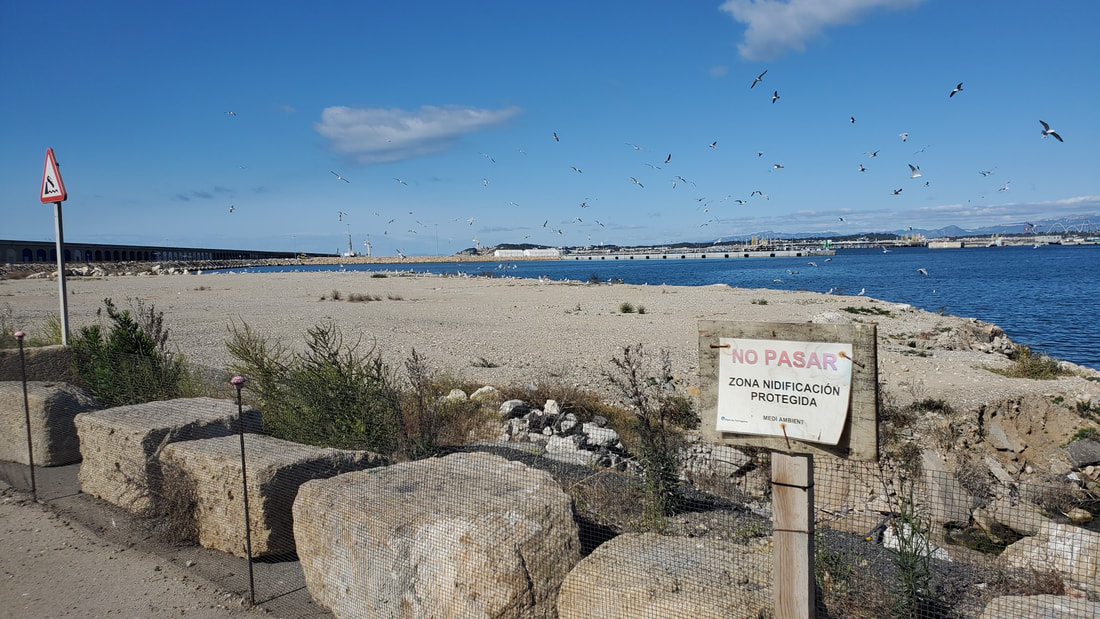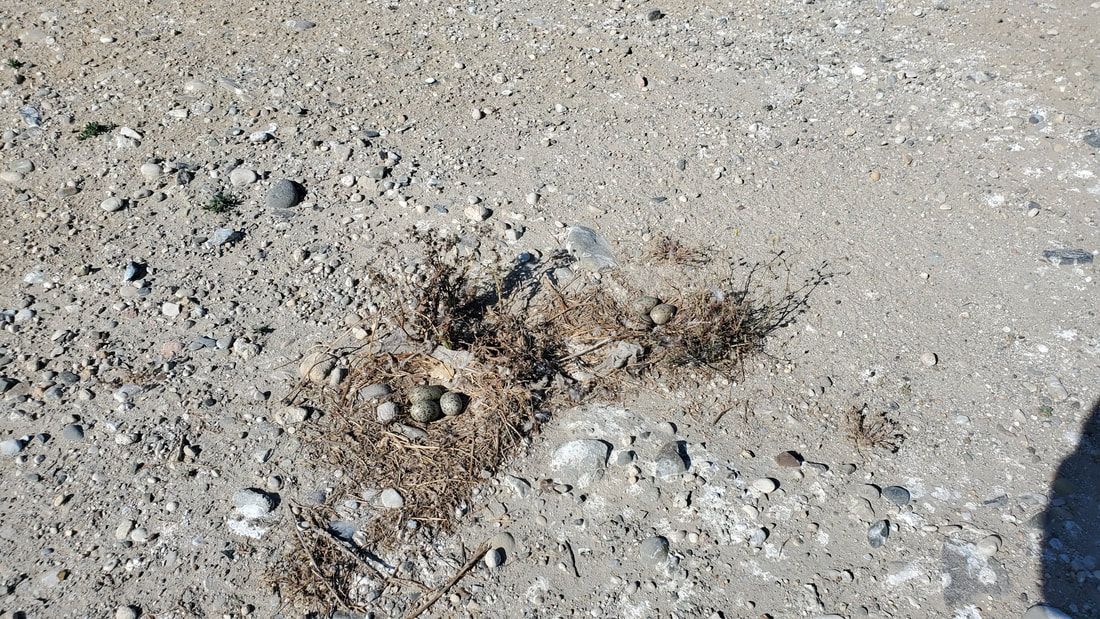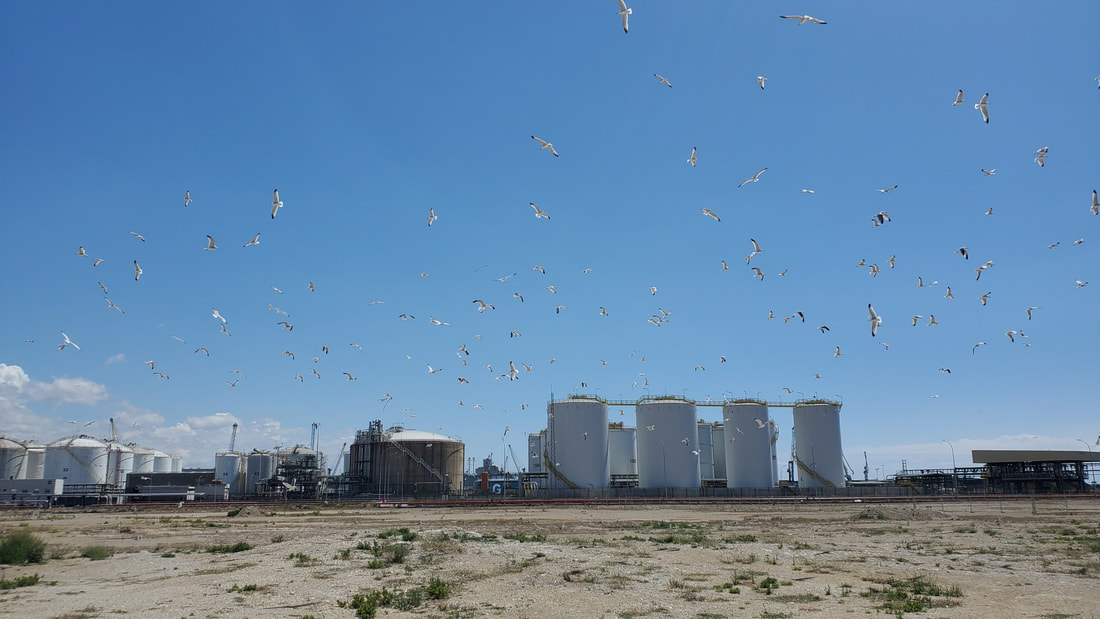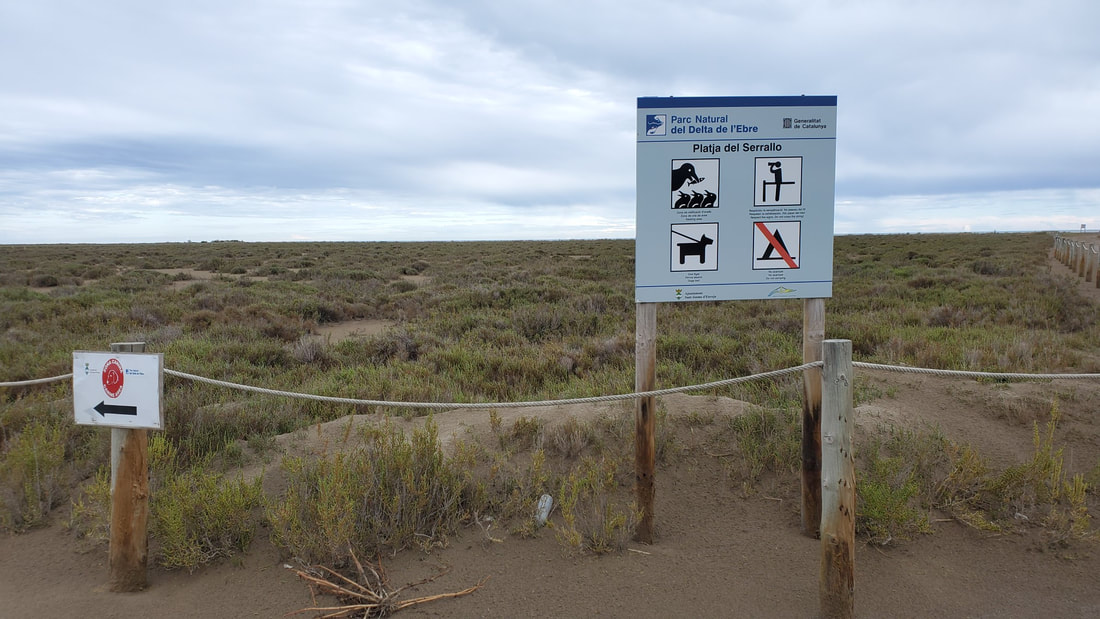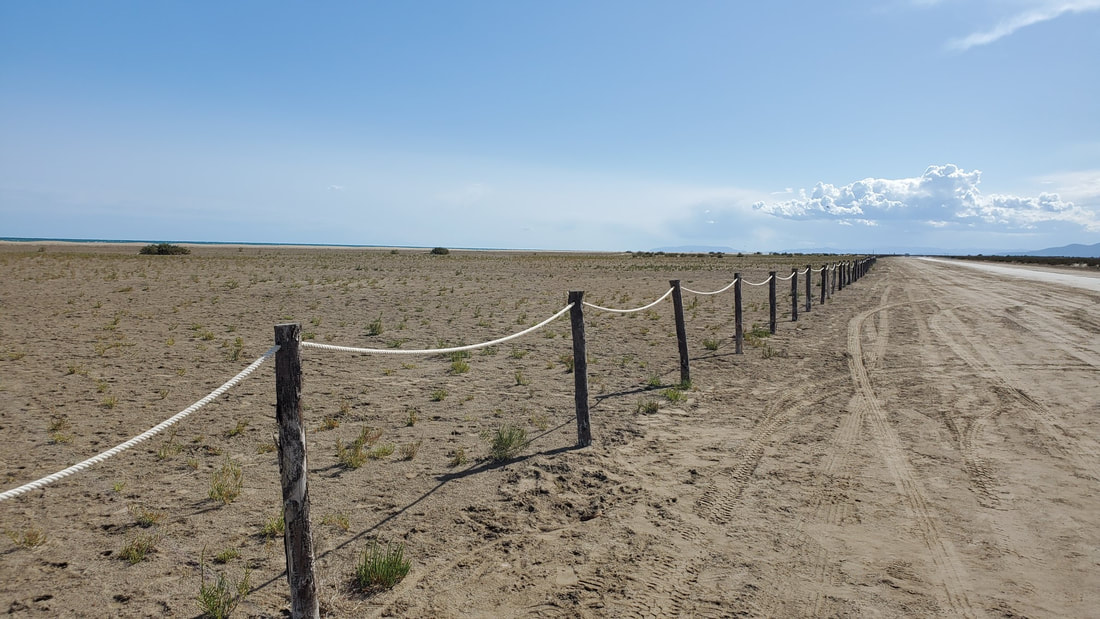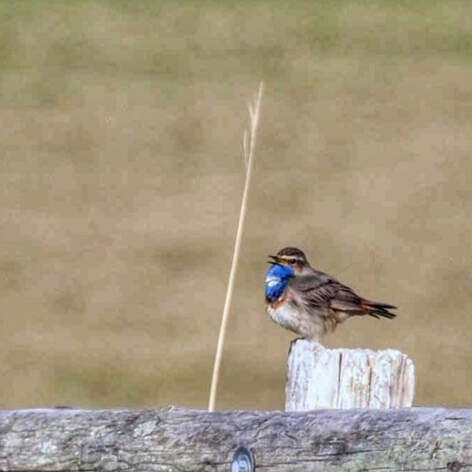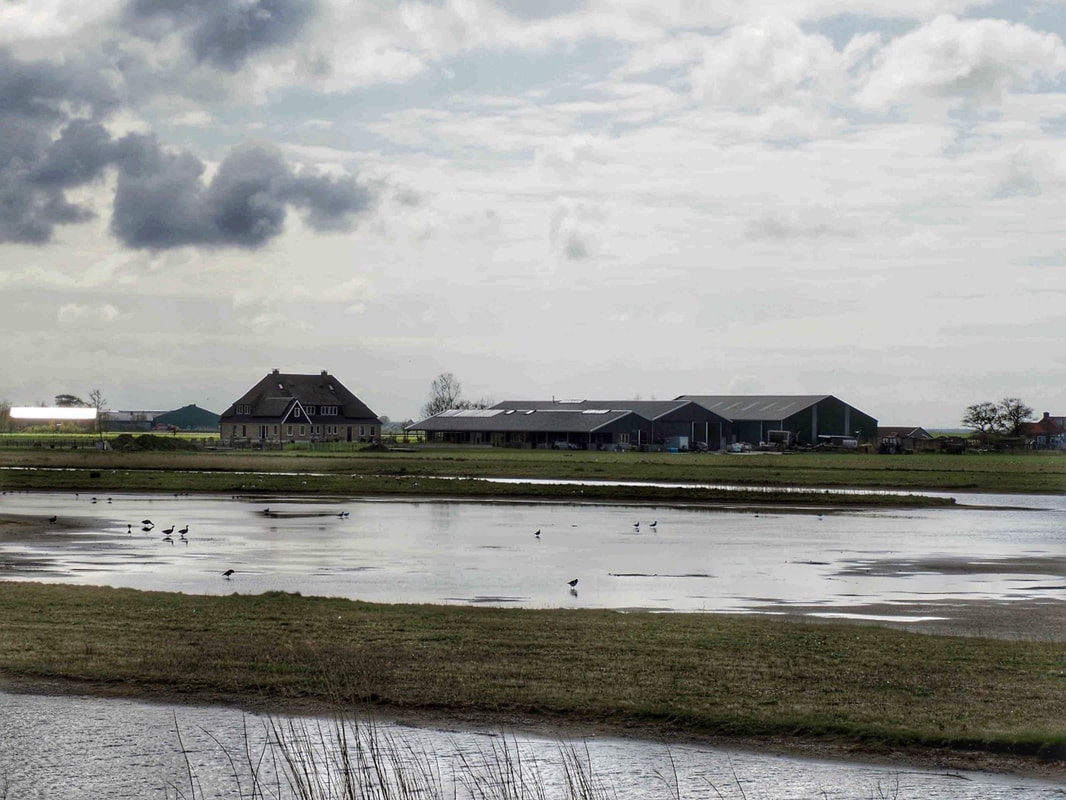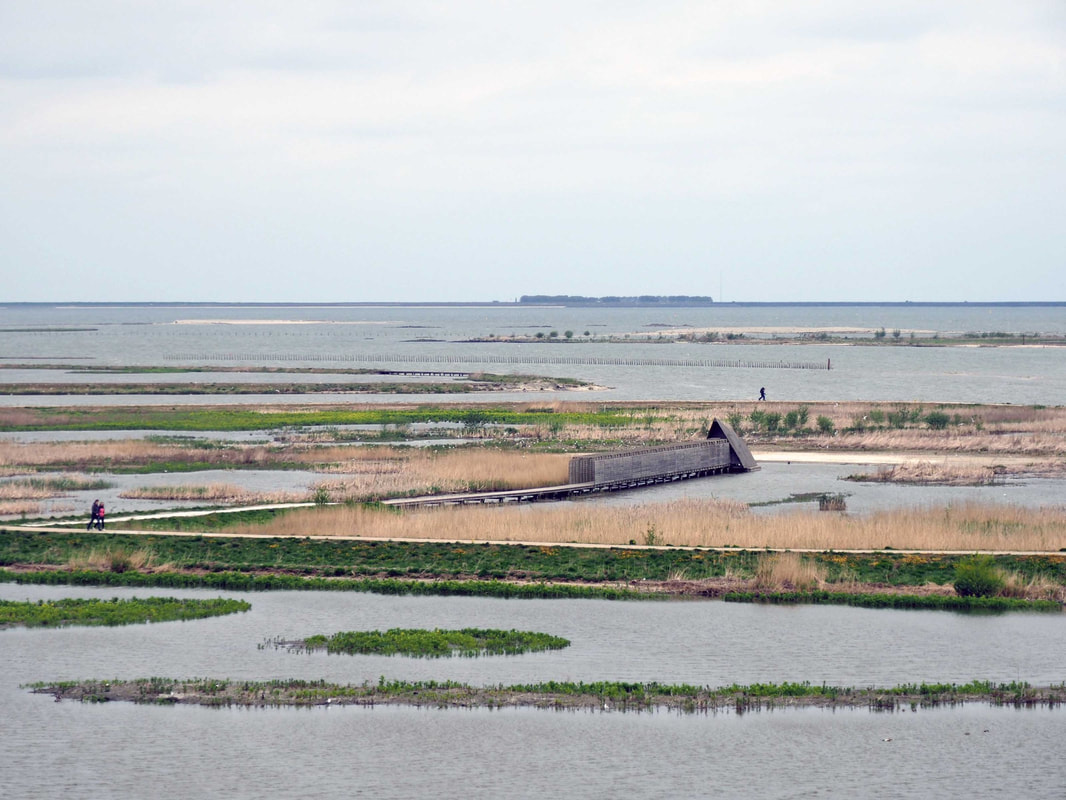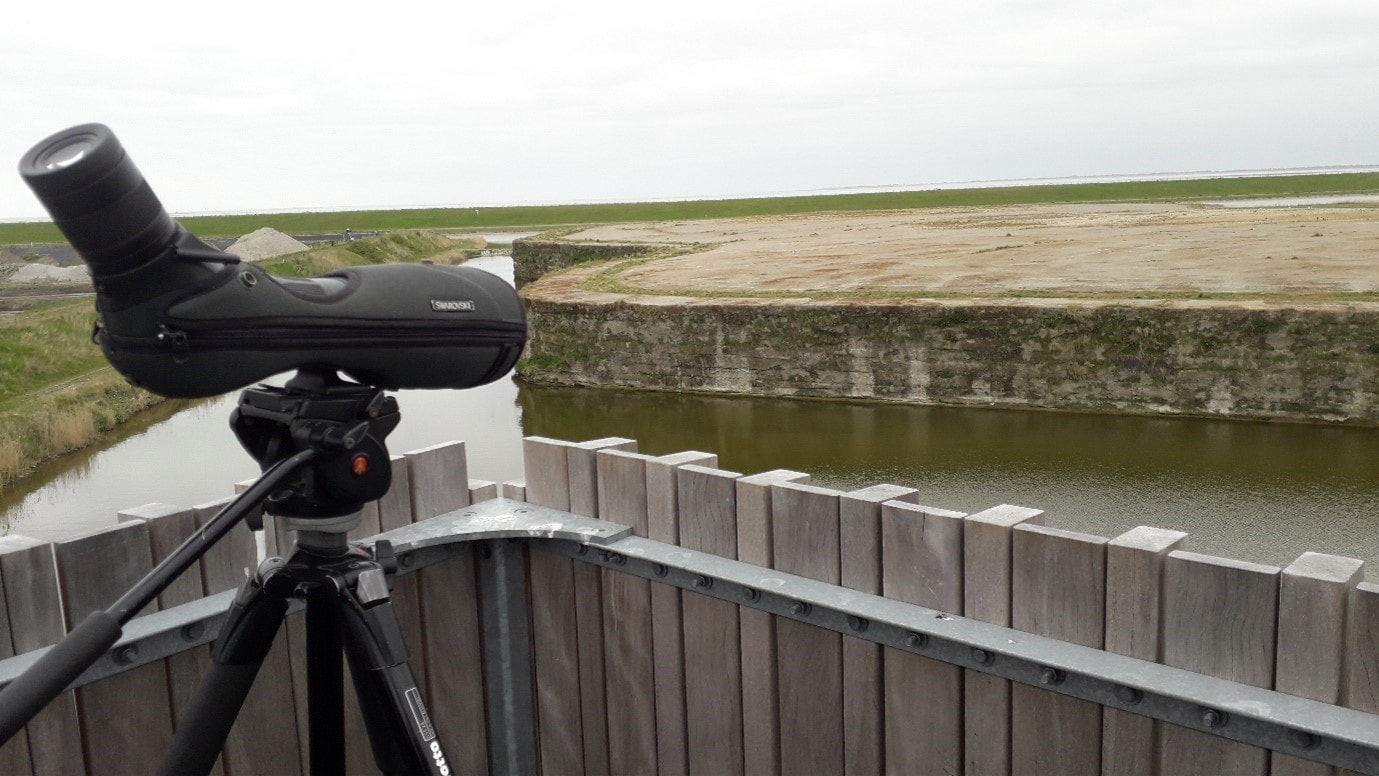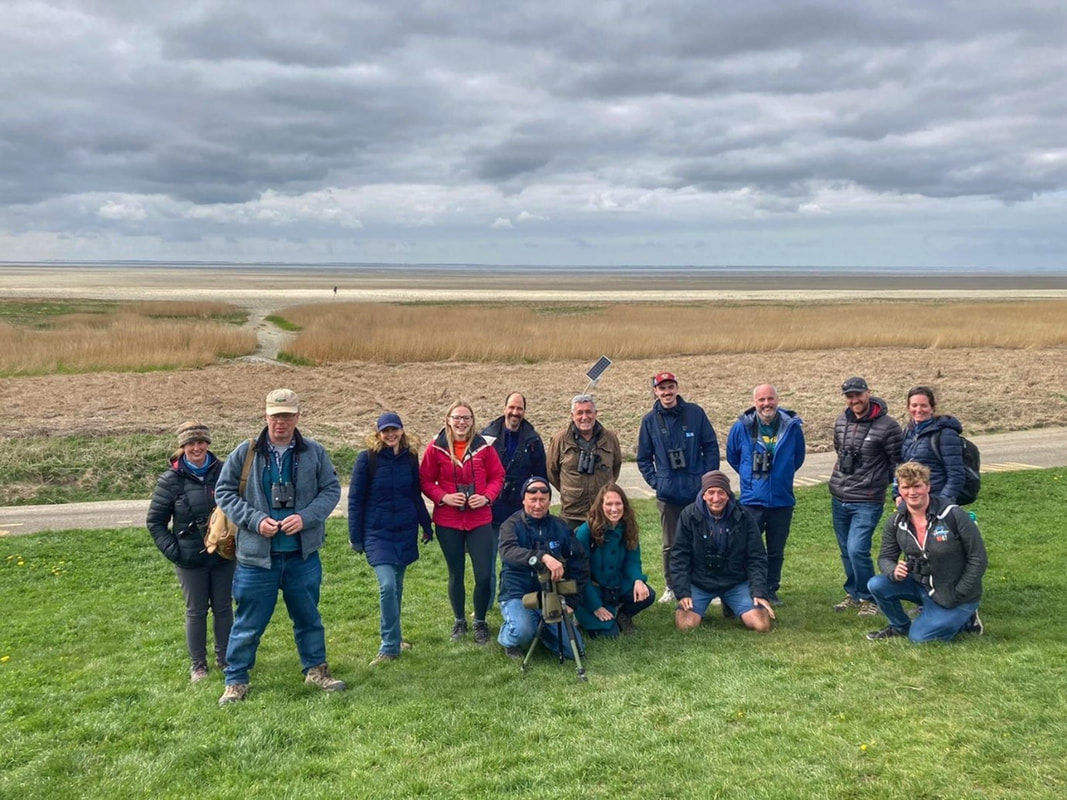|
Blog by Sarah Dalrymple, RSPB Senior Species Recovery Officer Last week I was out in and around Barcelona with Ricard Gutierrez and his colleagues from the Fauna Conservation Unit of the Government of Catalonia, to see how they monitor and protect breeding colonies of Audouin's Gull (Ichthyaetus audouinii). The current European population estimate for this species is estimated at 15,900 to 21,800 pairs, from just 1,000 in 1970s. Their biggest colony at the Ebro Delta, in Catalonia, was hit hard by predators in the early 2010s. The birds moved to more urban settings: at the docks in Barcelona and Tarragona, about 80km to the west, and at a rooftop colony on a factory in Barcelona’s industrial zone. Barcelona Port At Barcelona port, a few hundred gulls chose to nest on land put aside for development. To discourage them away from this area, and onto a nearby protected area put aside for them, the port landowners employed someone to walk up and down the development area all spring and summer, preventing the birds from settling in this area. The area on top of a nearby Harbour Wall was designated as compensatory nesting habitat. With the birds unable to settle on the development land, they were encouraged to move to this location by placing simple bits of shelter. This was amazingly successful; rocks, pipes, branches, everyone had a nest or two (or four!) next to it. 2023 found 838 nests here, an increase from 439 in 2022. Zona Franca, Barcelona The rooftop at Zona Franca covers nearly 7ha, where we counted 438 nests of Audouin’s, alongside a large colony of Yellow Legged Gulls (Larus michahellis). The Yellow-leggies outcompete the Audouin’s for space, pushing them further away into the corners of the site. Like at the docks, nests were frequently found next to something, in this case pipes, rooftop structures, and in one case – a cactus. This is the only known roof-top nest site for Audouin’s gull. 438 nests were counted here in 2023, a slight decrease from 453 in 2022, but still up on the 205 pairs counted in 2021, when the colony was first discovered. Tarragona At Tarragona, harbour authorities have fenced off the two nesting areas of these birds. Like at Barcelona, access to the dock area is restricted, so they are protected against casual disturbance. Again, the gulls preferentially nested next to even the smallest bit of shelter. At Tarragona port, the two sites held 651 nests in 2023, an increase from 439 in 2022 but still down on the peak of 1,043 nests in 2018. The work of the Fauna Conservation Unit has involved not just monitoring and protecting, but working with the commercial landowners at the docks and the factory to secure and protect the nest sites of this species. It has absolutely paid off; increasing the number of colonies provides security for the species, and by their locations, these colonies are protected from most predation and disturbance. It is great to have strong evidence of the positives of colonies sited in urban and industrial areas. At the Ebro Delta, I was shown the simple measures that have been put in place to help protect beach nesting birds such as Kentish Plover (Charadrius alexandrines) from recreational disturbance. As well as signage, extensive areas have been fenced off with rope fencing to prevent vehicle access. We spoke about how with very similar issues in the two countries when it comes to beach nesting birds, there is a lot of potential for co-operation and information sharing. This was a fantastic visit. It was great to meet Ricard and his team, and I cannot thank him enough for taking the time to welcome me and show me the gull colonies in these incredible places, as well as the pelagic boat trip, excellent birding around the Ebro Delta and some amazing Catalan tapas. If interested, more information can be found here: Government department website: mediambient.gencat.cat/ 2022 season summary: birdspain.blogspot.com/2022/06/la-gaviota-de-audouin-en-catalunya-en.html
0 Comments
Blog by Steve Rowland, RSPB England, Area Manager Norfolk and Lincolnshire Sometime in the 1990’s and I was on a birding trip to Holland with some friends, we’d been taken by some Dutch birders to Beech wood. The canopy was that luminous green that you only get for a few weeks in Spring, and somewhere out of sight we could hear the calls of a Black Woodpecker echoing through the trees. I remember all of us tensing up, this was a bird we all really wanted to see and had managed to miss on previous visits. Suddenly the woodpecker flew into view and the reason for its calls followed it in the form of a pursuing Goshawk. For what felt like couple of minutes but, was probably only a few seconds we watched these two birds chase each other before they both disappeared back through the curtain of Beech leaves and all was quiet again. It was experiences like this that led me to visit Holland for three springs in a row in the 1990's. With friends I would make the short ferry crossing from my then home in Kent to France and the easy drive up to motorway to Holland, where we would then have a long weekend of full-on Spring birding around the Oostvaardersplassen. I remember that we were blown away by the brilliant birding that we experienced and the scale of some of the habitats and we left thinking that the Dutch had it sorted in how they looked after their environment. Roll forwards a couple of decades and this Spring I found myself back in Holland on a work study tour with colleagues from the RSPB and National Trust. Our first stop was the island of Texel where on an early morning walk through the dunes I saw a Goshawk, triggering memories of my earlier visits to Holland. Later that day the group enjoyed brilliant views of our first Bluethroats of the trip and as before the quality of the birding experience blew folk away. On our first afternoon we gathered by the side of a marsh with the splendid name of Utopia. Our host talked to us knowledgably about just one of the challenges of managing land for nature on this agricultural island. He explained that as the dikes [seabanks] are built higher in response to rising sea levels, an especially big deal for the Dutch where half the country is below sea level, the greater weight of water behind the raised seabanks causes increased water pressure and seepage through and under the seabanks and into the fields creating more saline conditions, forcing the islands farmers to trial growing salt resistant varieties of potatoes. As we found more than once during our tour, an action to remedy an environmental problem initiated by human action would often result in new problems to tackle. To get to the island of Texel we had to drive past mile after mile of intensively farmed fields, many of these were covered in Tulips, glowing orange, yellow, pink, purple and orange, psychedelic stripes across the landscape causing you to reach for your sunglasses. It was striking that there was no edge habitat around the fields, none of the headlands that we are familiar with in the UK. Not only does this mean there is a shortage of wildlife habitat in these areas, but it also became apparent in conversations with our hosts, that during the Dutch Covid lockdowns there was also a shortage of places for people to go for walks in the countryside with many resorting to visiting nature reserves creating extra pressure on these, but paradoxically leading to an increase in Dutch nature conservation organisations membership numbers. One of the things that struck us when visiting some of the Dutch nature reserves was the scale of them and the amount of money that had been spent on creating habitats. Sometimes this work was driven by European law requiring compensatory habitats to be created where they were being lost elsewhere. The ability to give large areas to nature in this densely populated country also in part seemed to be due to the fact that there was "new land" to use, land which had once been part of the Wadden Sea Europe's most important area of intertidal habitats stretching along the North Sea coast from Holland through Germany to Denmark. It was sobering to be told that today perhaps only a third of the original extent of the Wadden Sea’s intertidal habitats are left, the rest having been taken for sea defences, agriculture and the creation of the large freshwater lakes of the IJsselmeer and Marker Wadden. Creating these large freshwater lakes in areas which were once part of the sea has created environmental challenges, but have also provided some space for habitat creation, but importantly not the replacement of the intertidal habitats that would once have been there. To see one approach the Dutch have taken to creating breeding habitat for coastal birds we drove to Lelystad and boarded the Tall Ship Abel Tasman joining day trippers, scientists, and volunteers for the 40-minute trip out to the new sand sculpted islands in the middle of the Marker Wadden. These low-lying sandy islands cost about £70 million Euros to construct and have so far been a great success attracting nesting Terns, Kentish Plovers and lots of visitors. On our visit on a cold grey spring day, we were struck by the number of Bearded Tit’s in the new reedbeds on the island and the many shallow lagoons that had been created one of which was temporary home to a Black Winged Stilt. There were also some innovative looking hides, with a very striking tower hide giving great views across this new man-made landscape and an interesting sunken hide giving you knee level views of the local Avocets. These islands are a well monitored experiment, so far they have managed to remain free of ground predators and with good populations of insects to feed the birds. The next challenge will be what nature will do in reaction to their creation, already Willow trees are colonising the new islands, if the aim is to keep the breeding terns and shorebirds the management approach will need to find a way to stop the islands becoming covered in Willow scrub. During our week we learnt a bit more about the challenges that the Dutch face in their man-made landscape to keep wildlife habitats in equilibrium, whether in response to climate change, increased human demands on the landscape or an increase in predators attracted to islands of abundance in an intensively managed agricultural landscape. We also saw the can-do approach the Dutch bring to some of their problems whether that be the sand sculpted islands on the Marker Wadden or at Balgzand where on the edge of an industrial estate we stood with the Natuurmonumenten warden in a tower hide that looked over a large, raised island. The island was edged by crumbling 10-metre-high man-made cliffs. This island had been made to compensate for the loss of nesting seabird habitat elsewhere and had been constructed out of low-level contaminated waste, a cost-effective use of this locally generated material with a hoped for added environmental benefit. On the island’s flat top, a pair of Little Ringed Plovers displayed over Oystercatchers and Black Headed Gulls, we were told that soon Terns would return to prospect this raised island for nest sites. So far so good, the feral cats that have proved such a problem elsewhere can’t access the ground nesting birds, but the crumbling cliffs are no barrier for Brown Rats which have colonised the island and last Spring ate their way through the nesting seabirds, their eggs and chicks. It isn't possible to trap or poison the rats so a hunter has been employed to shoot them, it remains to be seen if this will make a serious dent in the rodent population. Another island is planned to follow the same design, our host said that this might be lower but have a metal skirt around its edge to prevent predators accessing it. On our last day in Holland, we make one final stop by the side of the road that edges the Oostvaarderplassen, a vast wetland complex and site of an experiment in re-wilding that has been influential in developing new approaches to nature conservation across Europe. For several minutes our car passes alongside some large freshwater lakes over which are countless Little Gulls and Black Terns hawking for insects. We pull off at a parking space and watch a White-Tailed Eagle fly across a dried-out marsh. This eagle is part of recent increase in this species population in north-west Europe, originally driven by the growth of the German population, it was this man driven landscape experiment that helped them colonise the Netherlands. Stretching into the distance beyond the fence in front of us half of the Oostvaarderplassen has been at the centre of a re-wilding experiment, this at one time led to a huge amount of dead livestock being left in the landscape for scavengers to eat including young White-Tailed Eagles whose survival rates dramatically increased which in time led to an increase in the Dutch breeding population. The wetland in front of us was not dry because of drought, but because the scientists who run the reserve have switched the wetland off for three years to try and refresh the wetland habitats with plant material, so that when they re-flood these marshes there will be more food for the insects at the bottom of the food chain, which in turn will lead to more food for birds and other wildlife. An un-expected consequence of this drying out has been to push wetland birds out across Holland, with new Spoonbill colonies springing up across the country as a response to this most recent human intervention in the landscape. Looking across the Oostvaarderplassen as an eagle flaps by is not a bad way to end a trip to Holland. To quote Sam Hamm "talk provoking is thought provoking" and we had much to talk and think about on our weeks study tour. In particular we were struck by the fact that the Dutch are facing many similar problems to us the effects of climate change, recreational use of the countryside, predation, and pressures from industry. They have a can-do approach to working at scale to construct new landscapes such as the amazing sand-scaped islands in the Marker Wadden. But finding a new ecological equilibrium in such an artificial landscape isn't easy and the landscapes that existed before were of huge now gone ecological significance. All of us I think came away thinking about things a little differently, particularly the need to work at scale and just get things done. As my colleague Ben from the National Trust said, "at the end of the day it all comes down to graft". I returned home grateful for the chance to meet with some inspirational Dutch colleagues who shared their experience in delivering nature conservation and also some of the challenges that they face and often share with us here in the UK. I was certainly inspired and came away with new perspectives to help me with the hard graft of giving nature a helping hand in my corner of Norfolk and Lincolnshire. This LIFE on the Edge networking trip to the Netherlands was made possible due to the EU LIFE programme of the European Union. |
Archives
April 2024
Categories
All
Photo credits: Oystercatcher by Katie Nethercoat (rspb-images.com)
LOTE Logo credits: Saskia Wischnewski |

